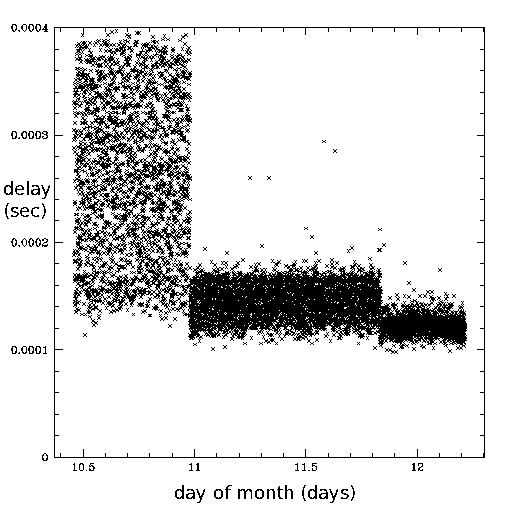

This first graph shows the round trip time from the client to the server as a function of time (in days) (the days are the calendar days of June 2012 in UTC). The client was at poll interval 4 throughout. Note the decrease in the round trip time in each change of the server's Gbps ethernet card.
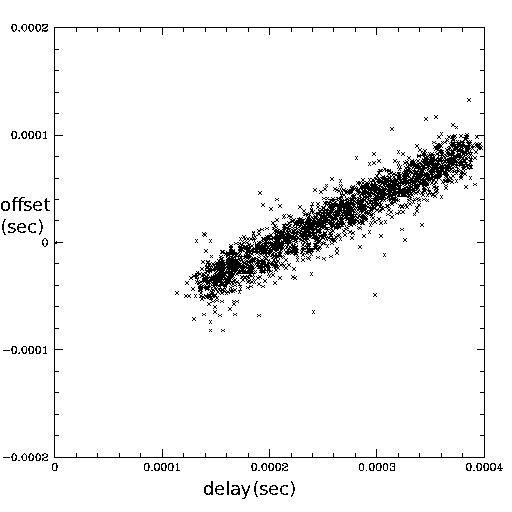
A scatter plot on the above from the initial time to the time 10.8. This was with the Gbps card set at 100Mbps and with rx-usecs: 3. Note the strong correlation between the round trip and the offset. This indicates that the round trip changes are maximally asymmetric with the extra delay occurring on the trip from the client to the server.
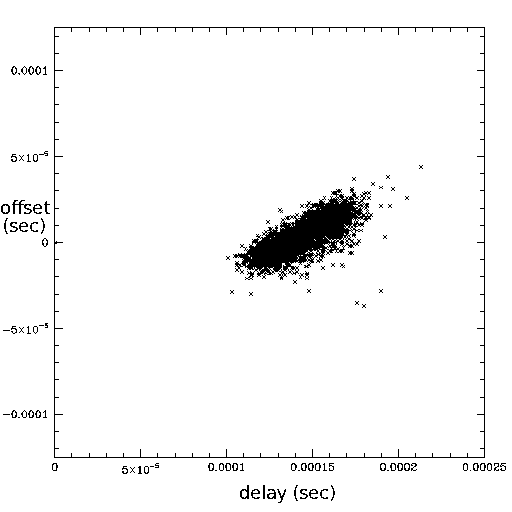
The scatter plot from the above from t=11.0 to 11.7. The Gbps card was running at 1000 Mbps but with rx-usecs: 3. There is still a strong correlation between the round trip time and the offset suggesting once again that the round trip time is asymmetric with the delay occurring in the client to server leg.
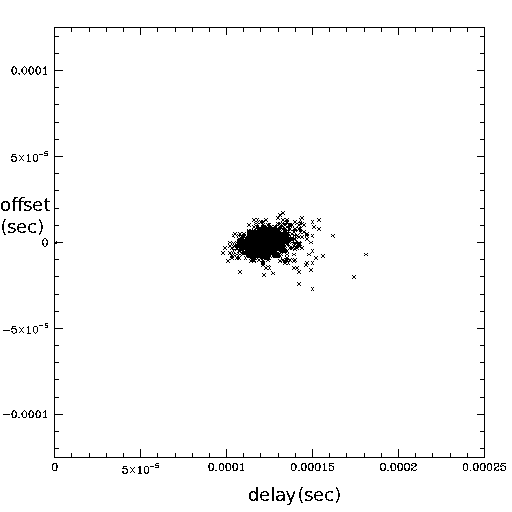
The scatter plot to the server when the interrupt
coalescence has been turned off (rx-usecs: 0) Note the absence
of correlation between offset and round trip time. The offset standard
deviation is about 5us.
This is close to the standard deviation of the server
offsets with respect to the gps pps source (1.8usec) This is
an amazing degree of accuracy over an ethernet between server
and client.
Note that a client whose signals go through three switches
on the way to the server, instead of just one, and is located on the opposite side of
the building also has an offset standard deviation of about
5us.
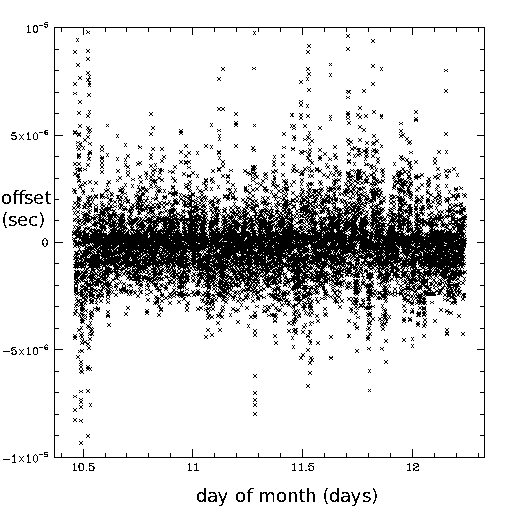
The offset of the server from the GPS PPS signal as a function of time. There is no change in the server's behaviour with respect to the GPS over the course of the experiment.